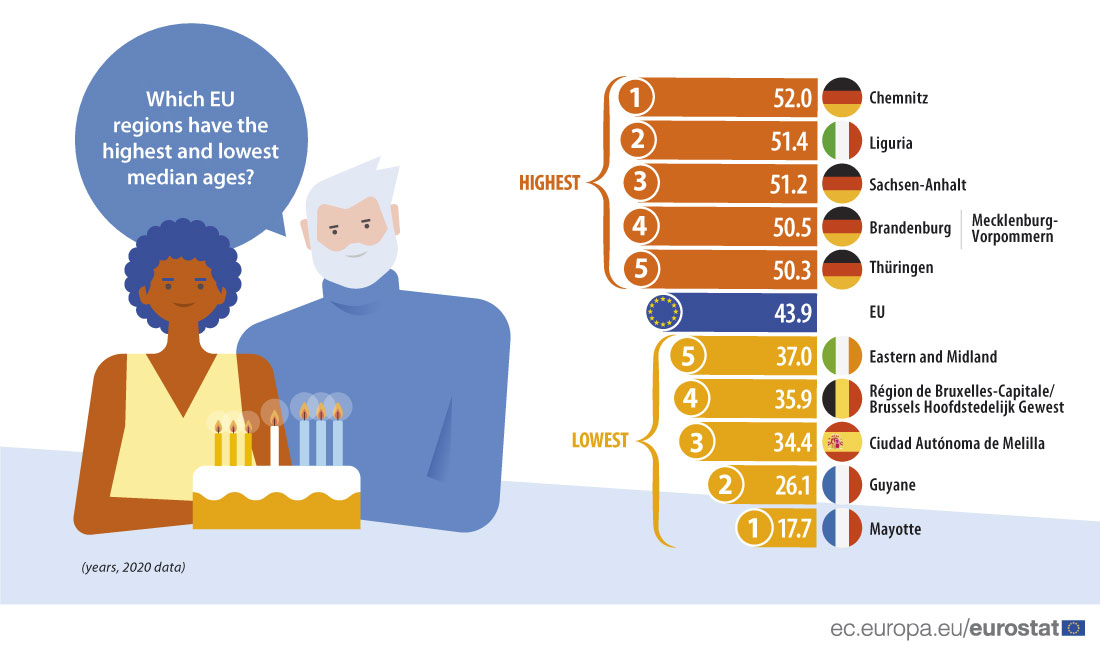In Latvia the median age was almost exactly the same as for the EU as whole, coming in at 43.7 years. As is often the case, Latvia was in the middle of the other Baltic states. Estonia had a median age of 42.3 years and Lithuania had a median age of 44.2 years.
The median age indicator gives an idea of the rapid pace at which the EU’s population structure is changing and can identify the EU regions most at risk of facing the challenges of an ageing society. It can also reveal migratory patterns (young people leaving a region) or low birth rates.
In 2020, most capital regions in the EU recorded relatively young populations – but the outermost French region of Mayotte recorded, by far, the lowest median age (17.7 years). This was followed by another French region, Guyane (26.1 years), and, at a distance, the Spanish region of Ciudad Autónoma de Melilla (34.4 years). None of these are geographically part of Europe.
On the other hand, the highest median age was recorded in Chemnitz in Germany (52.0 years). This was closely followed by the Italian region of Liguria (51.4 years) and another 4 regions in Germany: Sachsen-Anhalt (51.2 years), Brandenburg and Mecklenburg-Vorpommern (both 50.5 years) and Thüringen (50.3 years).




























